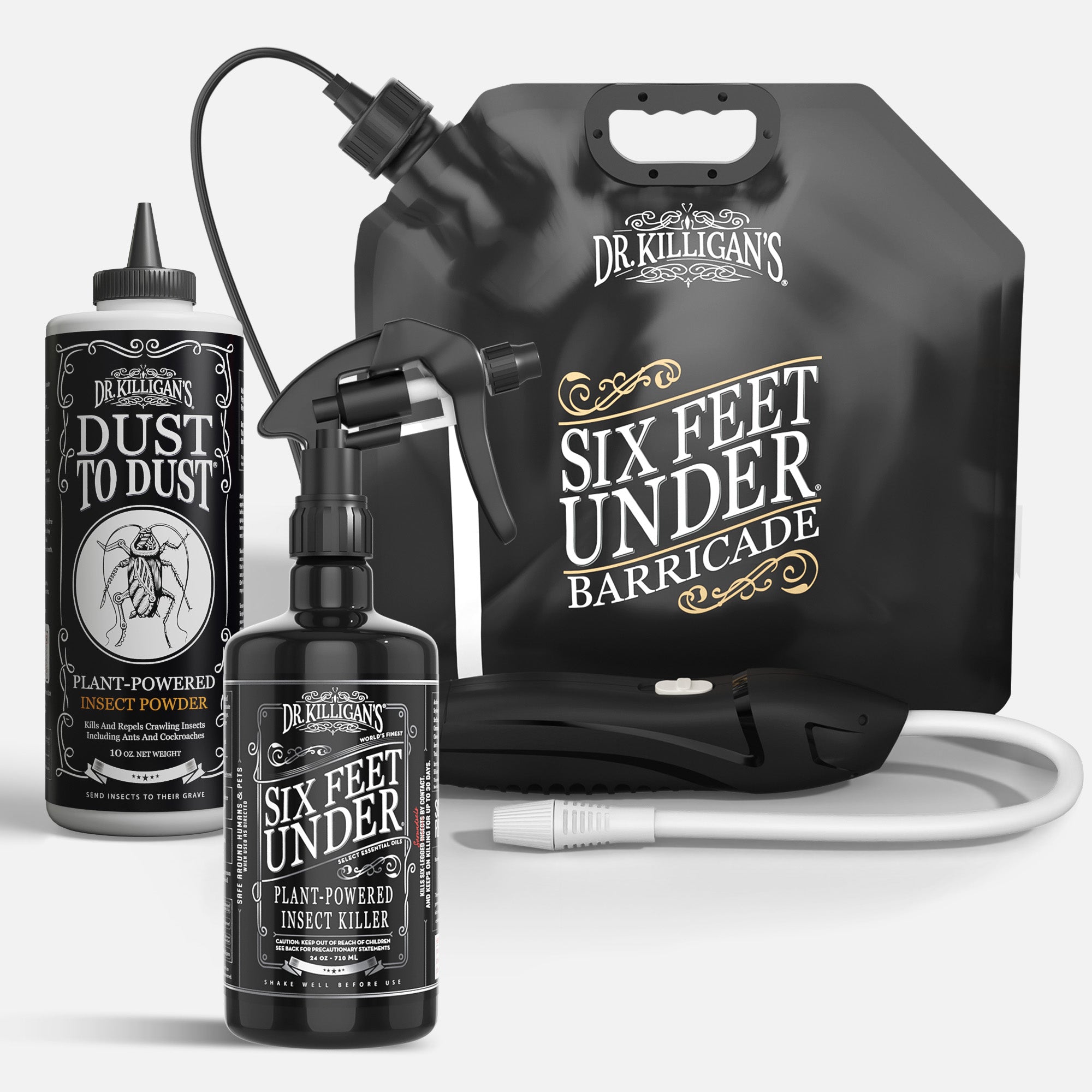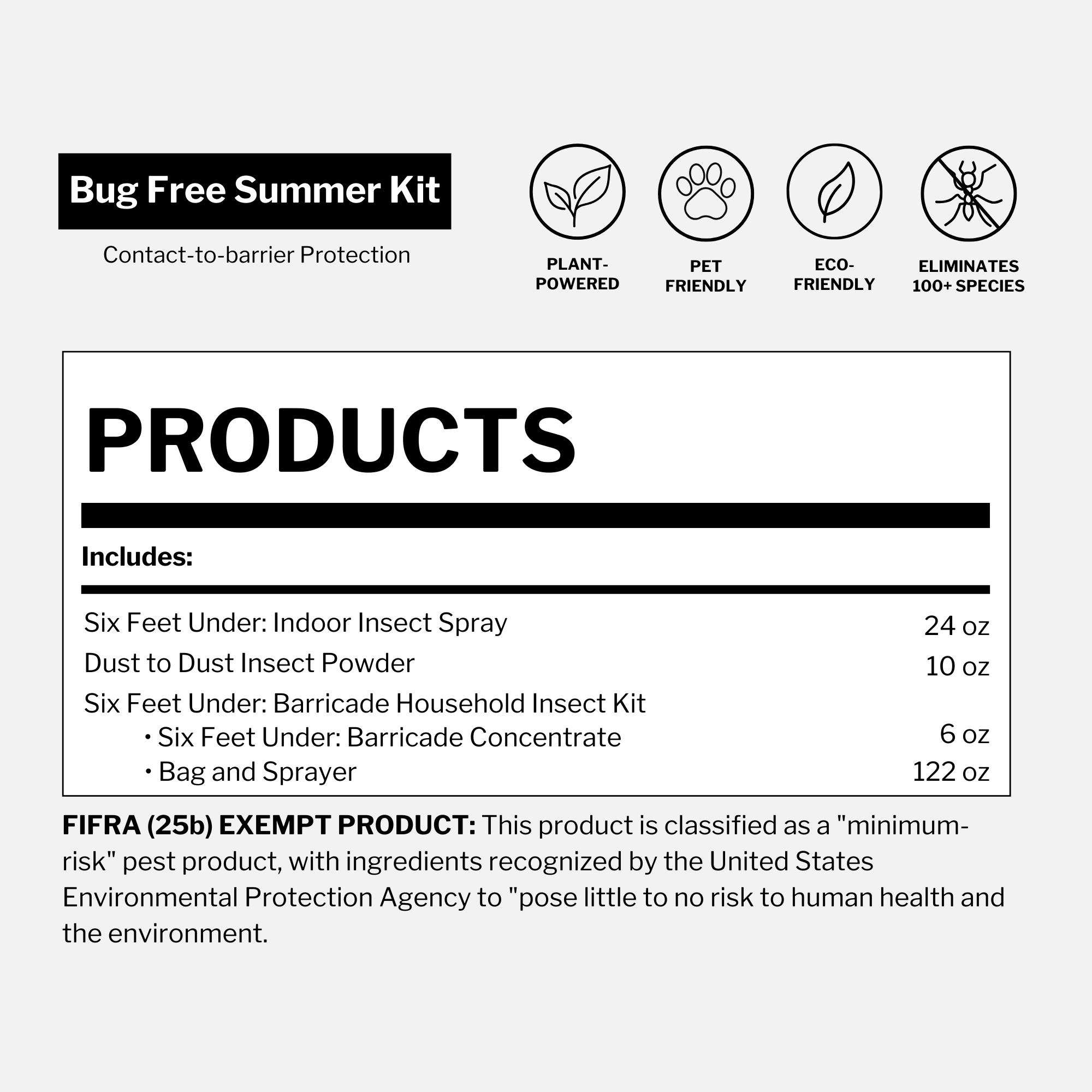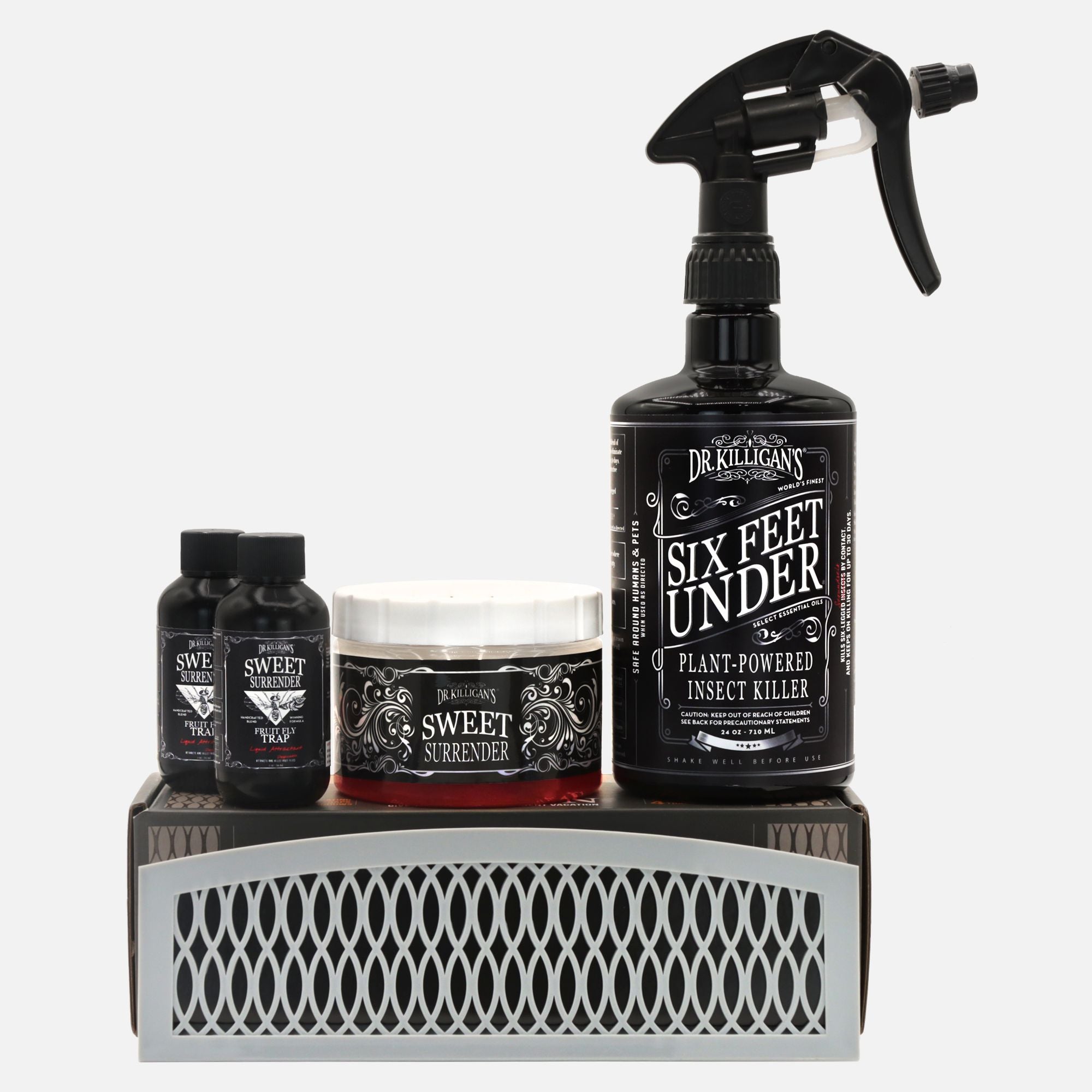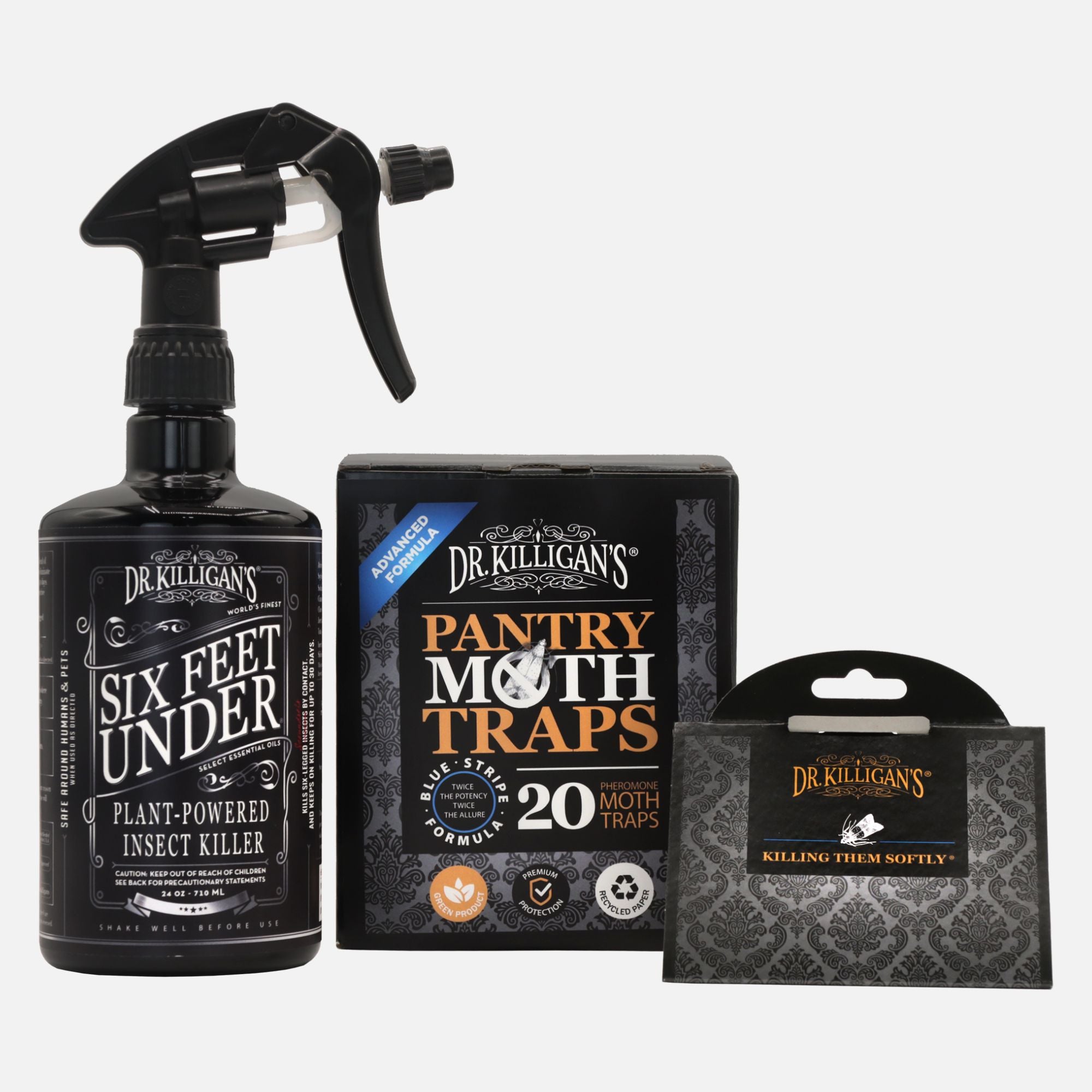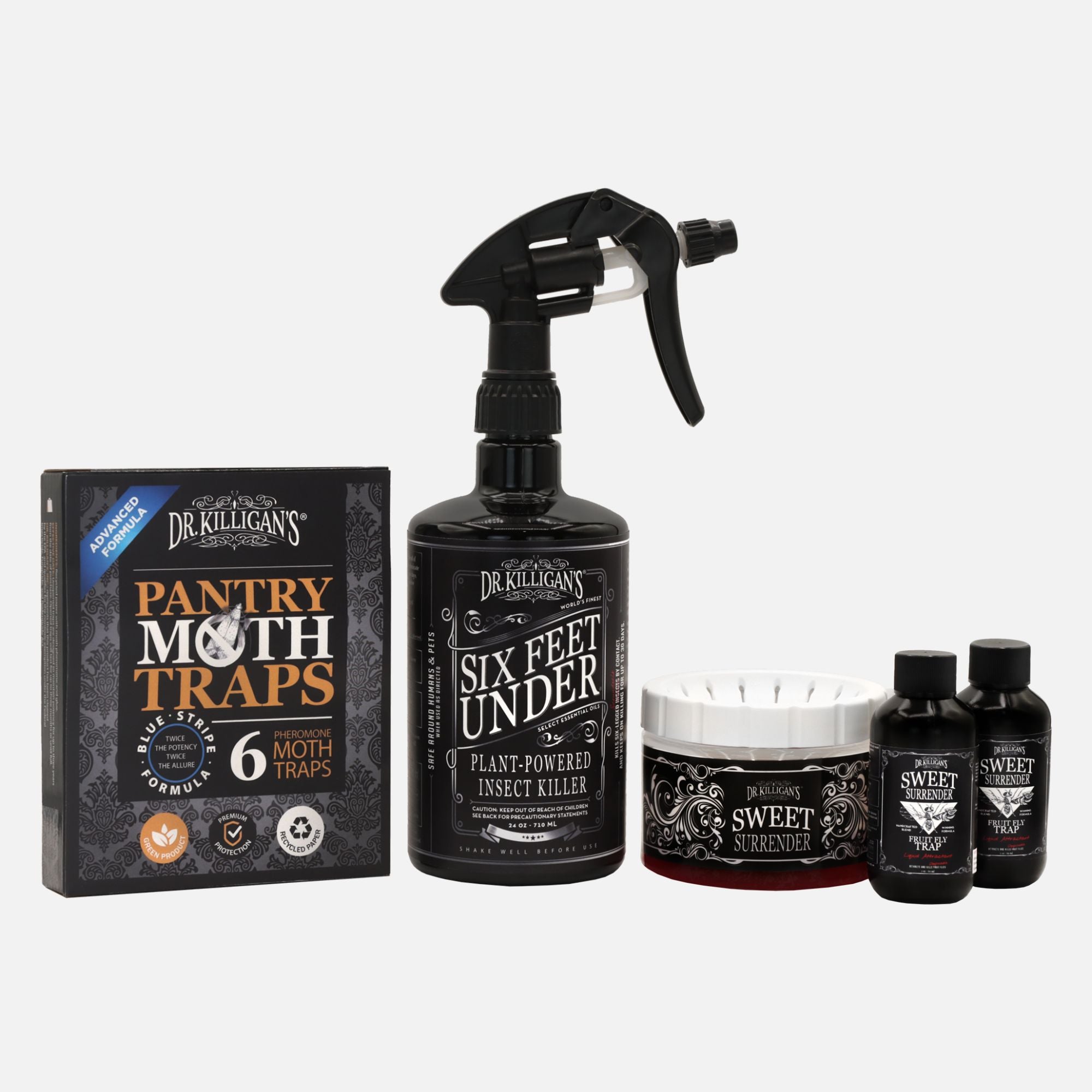Updated on May 5th, 2025
Wondering how to get rid of mosquitoes and keep them from coming back? Whether you're dealing with their buzzing indoors or trying to enjoy your yard without bites, this guide covers everything—from how to kill mosquitoes fast to how to keep mosquitoes away while sitting outside.
Life cycle of a mosquito
Want to know how to get rid of mosquitoes for good? Start by understanding their life cycle—because most of it happens in water and that’s where you can stop them.

Egg: Female mosquitoes lay eggs on water surfaces—even tiny puddles. Some species can survive dry spells for months, with eggs remaining dormant until conditions are right.
Larvae: After hatching, mosquito larvae—also called “wrigglers”—live in water and molt through four growth stages. This phase lasts 4 to 14 days, depending on species, temperature and food availability.
Pupae: In this non-feeding stage, pupae (or “tumblers”) float and flip near the surface. After a few days, they transform into adult mosquitoes.
Adult: Once emerged, the adult mosquito needs time for its exoskeleton and wings to dry. Males stay nearby to breed, while females search for a blood meal to restart the cycle.
All together, the mosquito life cycle—from egg to biting adult—can take as little as 7 to 10 days in warm conditions. That means a small patch of standing water can turn into a buzzing problem in just over a week.
How to keep mosquitoes away while sitting outdoors
Trying to kill mosquitoes or get rid of mosquitoes around your yard? With a few practical solutions, you can drastically reduce their presence when relaxing outdoors. Whether you're hosting on the patio, reading on the porch or lounging in the yard, here are six tried-and-try ways to keep mosquitoes at bay:
1. Eliminate breeding sites to kill mosquito eggs and larvae

Mosquitoes can breed in just a few days—even in a bottle cap’s worth of water. Female mosquitoes lay eggs in stagnant water and their larvae thrive in places you might overlook. Check your yard weekly for hidden breeding grounds like clogged gutters, plant saucers, bird baths, tarps, grill covers and kids’ toys. Dump, scrub or drain anything that holds water. Don’t forget to poke drainage holes in the bottoms of unused containers—anything that holds water is a potential mosquito nursery.
2. Use mosquito repellents

You don’t need harsh chemicals to repel mosquitoes—nature has its own arsenal. Lemon eucalyptus oil is one of the most effective natural options and is approved by the Centers for Disease Control and Prevention (CDC) for mosquito protection. In a 2014 study, a 32% concentration of lemon eucalyptus oil provided up to 3 hours of protection, making it one of the top choices for plant-based defense.
DIY mosquito repellent recipe:
Mix 1 part lemon eucalyptus oil with 10 parts witch hazel. Shake well before applying to exposed skin and clothing. (Not recommended for children under three.)
Looking for alternatives? These natural oils also repel mosquitoes:
- Citronella—Common in outdoor candles and sprays
-
Lavender—Smells great and deters insects
-
Basil—Great for gardens and potted plants
- Rosemary, cinnamon and peppermint—Multipurpose oils with proven mosquito-repelling properties
Tip: Reapply natural repellents every few hours, especially if you're sweating or swimming.
3. Dress appropriately to prevent mosquito bites
What you wear can make a big difference in your defense against mosquitoes—especially when outdoors at dawn or dusk, their peak feeding times.
Opt for loose-fitting, light-colored clothing. Mosquitoes are attracted to dark colors and can bite through thin, tight fabrics like leggings or activewear.
Long sleeves and pants offer the best coverage. While wearing shorts or tank tops in the heat might be tempting, covering up is one of the most reliable ways to prevent mosquito bites.
Choose tightly woven fabrics. Materials like denim, thick cotton or synthetic athletic gear with a tight weave make it harder for mosquitoes to penetrate.
Tip: For added protection, lightly spray clothing with your DIY lemon eucalyptus oil spray. (Test on a small area first to avoid staining.)
4. Landscape for mosquito control

If you want to keep mosquitoes away from your yard and outdoor spaces, your landscaping choices will make a difference—either invititing them in or keeping them out.
Start by trimming back overgrown shrubs, tall grass and dense vegetation. These shady, humid areas create ideal hiding spots for adult mosquitoes during the day.
Avoid water-holding plants and mulch that stays damp. Mosquitoes love moist areas. Instead, choose drought-resistant plants and use gravel or cedar mulch to discourage pooling.
Add mosquito-repelling plants to your garden and patio pots. These include:
-
Citronella grass—Natural oils in the plant repel mosquitoes (better than citronella candles).
-
Lemongrass—Contains citronellal, which deters mosquitoes naturally.
- Marigolds—Emit a scent mosquitoes dislike and help with other garden pests too.
Tip: Plant these near seating areas, entryways and windows to create a natural barrier against mosquitoes.
5. Unleash fans to create wind barriers
Mosquitoes are weak fliers. A steady breeze makes it difficult for them to land, bite or even hover near you. Setting up a fan on your patio or porch is one of the simplest ways to keep mosquitoes away while sitting outside. For the best results, direct airflow toward seating areas.

6. Create DIY mosquito traps
If you’re looking for a cost-effective way to kill mosquitoes, try a homemade mosquito trap. These traps are easy to make and surprisingly effective at reducing mosquito populations around your yard or patio.
DIY mosquito trap recipe:
Mix 1 cup of warm water with ¼ cup of granulated sugar. Stir until the sugar dissolves, then add ¼ teaspoon of active dry yeast. Let it sit for a few hours to ferment. Pour the mixture into a container and top it with an inverted funnel (or cut a plastic bottle in half and invert the top). The carbon dioxide released by the yeast mimics human breath, drawing mosquitoes in. Once inside, they won’t be able to escape.
Place these traps in shaded outdoor spots where mosquitoes tend to gather—like under tables, near seating areas or beside planters. For best results, refresh the mixture every couple of days.
Bonus tips: How to keep mosquitoes out of your home
Even if you're mosquito-free outdoors, it's just as important to protect your indoor spaces. Here’s how:
- Install window and door screens: Keep bugs out while letting fresh air in.
- Run indoor fans: Mosquitoes dislike airflow—as mentioned—especially in still rooms.
- Use essential oil diffusers: Try peppermint, citronella or rosemary near doors or sleeping areas.
- Fix cracks and gaps: Ensure there are no hidden mosquito entry points near windows or vents.
- Use mosquito nets: Especially helpful in bedrooms to block bites while you sleep.
Do dryer sheets, tiki torches or other home remedies keep mosquitoes away?
Many home remedies claim to repel mosquitoes—but do tiki torches keep mosquitoes away? And can dryer sheets keep mosquitoes away or is that just wishful thinking?
- Dryer sheets: Tucking dryer sheets into hats or pockets is a common trick, but studies show minimal effect. They may slightly mask human scent, but they don’t consistently repel mosquitoes.
- Tiki torches: While their flickering flames create ambiance, they're not reliable mosquito repellents unless they burn citronella or similar plant-based oils. Even then, their effectiveness is limited and short-lived—especially outdoors.
The best DIY mosquito solution while sitting outside?
If you want to know how to keep mosquitoes away while sitting outside, stick with what works: lemon eucalyptus oil, outdoor fans that create wind barriers, tightly-woven clothing and removing stagnant water. Combine multiple strategies for stronger protection.




